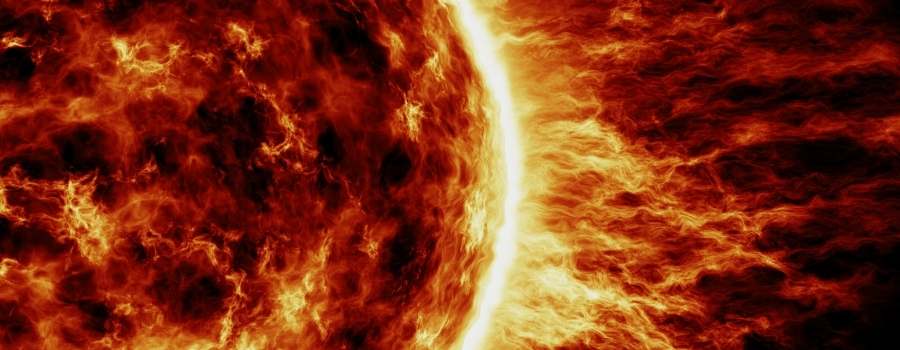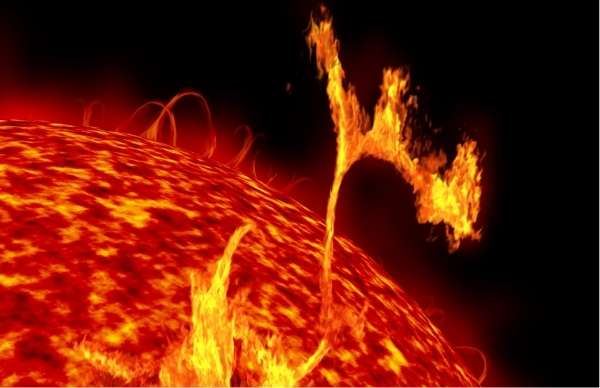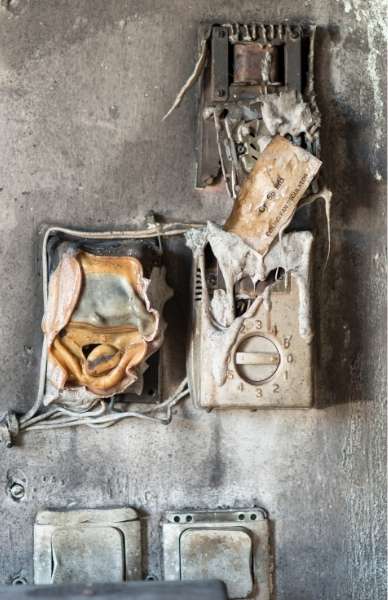
It seems like every other week there is a news story about a solar flare or EMP (Electromagnetic Pulse.) A lot of hype builds up about them possibly affecting the power grid or computers…but mostly pass with little to no fuss.
But what about solar panels…especially large arrays for people that are 100% solar sustainable or off the grid?
Solar panels are very durable and can usually withstand a lot of wear and tear, but it’s important to take precautions to protect them from an EMP. I started looking into some of the potential hazards that solar flares and EMP’s could cause to see if the average solar customer needed to worry or if there were some extra precautions you may want to look into.
Can A Solar Flare Or EMP Damage Solar Panels?
Generally speaking, an EMP will cause more damage to equipment that is plugged in and turned on. Solar panels, being solar powered, would be turned off during an EMP event and should largely be unaffected.
But, the broader answer is that we don’t really know. There hasn’t been a huge solar flare or EMP in recent history to test how they would affect solar panels. However, there are some things we can guess from looking at the effects of other electromagnetic events on electronics.
There is a small possibility that the voltage spikes from an EMP could damage the circuitry of a solar panel or charge controller, but this is relatively unlikely.
Batteries are a little more at risk for damage during an EMP. If the surge from an EMP is strong enough, it could damage or even destroy batteries.

Is A Solar Flare The Same As An EMP?
Solar flares and electromagnetic pulses (EMPs) are two distinct phenomena. They, however, tend to co-occur. When a solar flare occurs on the sun, it emits EMPs that can wreak havoc on your solar panels on Earth.
Before we dive into the effects of solar flares and EMPs on your solar panels, let’s take a step back. But, first, we must understand what they are and how they relate to each other.
Solar Flares
Solar flares are explosions that happen to the sun. You see, a lot of energy sits inside twisted magnetic fields on the sun’s surface. But when that energy releases itself suddenly, you get an intense explosion that can last anywhere from a few minutes to several hours.
Electromagnetic Pulse (EMP)
An electromagnetic pulse (EMP) is a quick burst of electromagnetic energy. The problem with EMPs is that they can disrupt or damage electronic equipment. When a device gets hit by an EMP, it will experience sudden high voltage and high electrical current surges.
Solar Flares Lead To EMPs
As you can see, a solar flare and an EMP are two separate things. Still, as someone with a solar power system, you must understand that solar flares lead to EMPs, damaging your setup.
To reiterate what I said above, solar flares and EMP’s likely won’t damage solar panels themselves…the exception being some rare but possible damage to the circuitry of the panels. But this doesn’t mean other components of your solar array will go unscathed.
Will A Solar Flare Or EMP Damage A Solar Charge Controller?

Solar charge controllers are vulnerable to solar flares and EMPs, as we’ve seen in the past. An EMP, on the other hand, will render a solar charge controller ineffective whether it is connected to anything else or not.
To understand why that’s the case, think about what a solar charge controller is and what it does.
It’s a part of the solar power system that regulates the flow of electricity from the panels to the battery.
The controller does that successfully thanks to the printed circuit board inside and the electronic components attached to it. These parts are crucial to the controller’s functions.
But unfortunately, they are also what makes the controller so vulnerable to the EMPs from solar flares.
The reality is that modern integrated circuits, especially the ones in solar charge controllers, are exceptionally sensitive to damage from EMPs.
Would A Solar Flare Of EMP Damage Batteries?
Since batteries don’t have electronic components, solar flares and EMPs are not powerful enough to damage them even if connected to a working solar power system. When electricity is needed, it enters the battery, stays there, and then returns to the system when needed.
So, there’s no reason to worry about your solar batteries, whether you have lead-acid, alkaline, or any other kind of battery.
But, if you have a backup generator that uses gasoline or diesel fuel to run, then an EMP could be a problem for you. The reason is that the electronic ignition systems in those generators are vulnerable to EMPs.
Exception: Batteries With Integrated Electronics
Some solar power setups use batteries with integrated electronics. For instance, some use batteries with built-in inverters or charge controllers. In this case, an EMP will put the battery out of commission.
Bottom-line, anyone concerned about EMP damage to their solar power systems will be better off separating their electronics from their batteries.
How Do I Protect My Solar Panels From An EMP?
Anyone with a solar power system will likely be concerned about solar flares and EMPs. Unfortunately, those concerns are entirely valid, given the potential damage to the system’s components.
Thankfully, there are several ways you can protect your solar panels from an EMP, here are two ideas worth checking out:
Unplug And Store
It’s essential to remember that solar flares and the EMPs they produce are temporary. They’ll last a few hours or even a few days, but they will eventually cease.
So, your first option for protecting your solar power system is to unplug all of its components. A working system with flowing electricity is more vulnerable to damage from EMPs.
Still, that’s not enough. Once you disconnect the system, you must store the parts in a way that protects them from the highly-damaging electromagnetic pulses.
Putting electronics in a steel garbage can will reduce the effects of electromagnetic waves. That’s because the garbage can functions as a Faraday cage that shields its contents from the EMP.
Harden The System
Unplugging and storing your solar power system isn’t always an option. So, you can choose to harden the system and make it less vulnerable to damage from an EMP. Basically, you’re making your system much more durable.
To do that, you must install protective components in the system’s circuits. These parts include:

- Surge protectors: As the name suggests, these components protect the circuit from electrical surges.
They do that by diverting the excess current to the ground instead of letting it damage the circuit’s components. - Power line filters: These filters are components that reduce the effects of any electromagnetic interference in the circuit.
- Ferrites: These attachments combine ceramic, nickel, zinc, and manganese compounds.
They reduce and dissipate high-frequency noises related to electromagnetic pulses when attached to the circuit.
Final Thoughts
Solar flares and EMPs are a real threat to many components in a solar power system. However, we usually get some warning…anywhere between 15 and 60 minutes.
Sure, that’s not a whole lot of time, but it is just enough time to prepare your system if you feel it is necessary.
By unplugging the system and storing its components in a steel garbage can, you can reduce the chances of component damage.
You can also make the system more durable by installing protective components in its circuits. These components will help reduce the effects of an EMP and keep your solar power system up and running.
